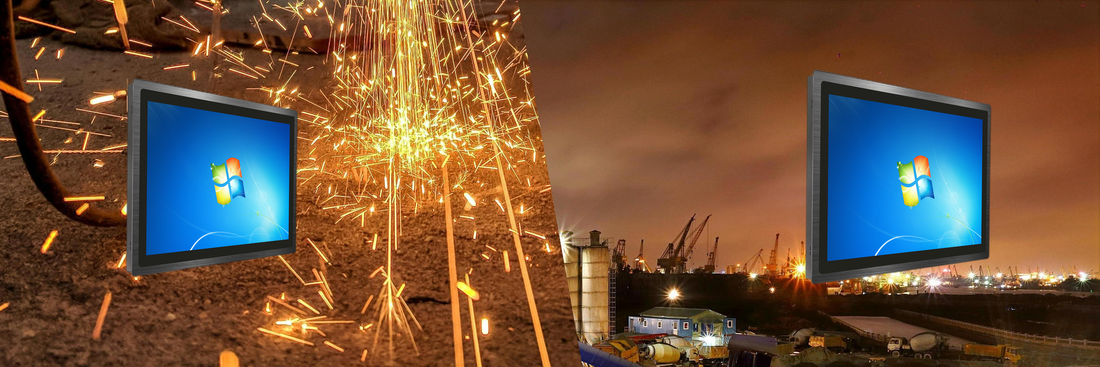
Exploring Storage Solutions: Understanding the Core Differences Between SATA and NVMe Technology
Exploring Storage Solutions: Understanding the Core Differences Between SATA and NVMe Technology
In today’s fast-evolving digital landscape, businesses and organizations rely heavily on data-driven solutions to stay competitive. Central to this transformation is the need for faster, more efficient storage solutions that can handle the increasing demands for real-time processing, rapid insights, and seamless integration of data across various platforms. As the Internet of Things (IoT) continues to expand and artificial intelligence (AI) systems become more prevalent, storage technologies have also evolved to keep pace with these dynamic needs. At the forefront of this evolution are two primary technologies: SATA and NVMe.
Both SATA (Serial ATA) and NVMe (Non-Volatile Memory Express) play critical roles in modern storage solutions. However, their performance, scalability, and overall architecture differ substantially, and understanding these differences can help you make better decisions when choosing storage solutions for edge computing, enterprise data centers, or any other digital environment. This comprehensive exploration of SATA and NVMe will not only clarify their technical distinctions but also demonstrate why NVMe is quickly becoming the go-to solution for edge computing in rugged environments.
The Solid-State Drive Revolution: How SSDs Changed the Game
At the heart of both SATA and NVMe technologies are Solid-State Drives (SSDs), which have largely replaced traditional Hard Disk Drives (HDDs) in performance-critical applications. Unlike HDDs, which use spinning platters to store data, SSDs rely on semiconductor chips, making them significantly faster and more reliable. The lack of moving parts in SSDs also means less wear and tear, resulting in greater durability, especially in rugged environments.
SSDs can leverage various communication protocols for accessing data, with SATA and NVMe being the most prominent options. Understanding how these protocols operate and how they integrate with SSDs will give you deeper insights into their respective benefits and drawbacks.
NVMe: The New Frontier of High-Speed Storage
NVMe (Non-Volatile Memory Express) represents a significant leap forward in storage technology. Unlike traditional storage protocols, NVMe is designed specifically for flash memory and is optimized for faster data transfer through the PCI Express (PCIe) interface. By bypassing some of the limitations seen in older protocols, NVMe has redefined what is possible in terms of storage performance and latency.
Key features of NVMe include:
- Multiple Command Queues: Unlike traditional protocols that may be limited to a single command queue, NVMe supports up to 65,535 queues, each capable of handling 65,535 commands. This design drastically reduces latency and increases throughput.
- Reduced Latency: NVMe’s ability to handle multiple command queues means that tasks can be processed simultaneously, reducing wait times and bottlenecks commonly associated with older storage protocols.
- Direct PCIe Connection: NVMe operates directly over PCIe, removing intermediary controllers that can slow down data transfers in other protocols like SATA. This direct connection allows for significantly higher data transfer rates, making NVMe ideal for data-heavy applications.
NVMe Form Factors and Standards
NVMe SSDs come in various form factors, offering flexibility for different use cases:
- U.2 drives: These are commonly used in enterprise systems and feature a standard 2.5-inch form factor.
- M.2 modules: Initially called Next Generation Form Factor (NGFF), M.2 SSDs are compact and commonly used in laptops and desktop computers.
- Add-In Card (AIC): These SSDs fit into a PCIe slot on the motherboard, offering some of the highest speeds available.
- Enterprise SSD Form Factor (EDSFF): This standard caters specifically to the needs of data centers and enterprise environments, where scalability and efficiency are paramount.
NVMe also includes advanced features like end-to-end data protection, improved error reporting, and support for virtualization. These enterprise-grade features make it an excellent choice for critical applications where data integrity and high performance are essential.
SATA: A Reliable Standard for Traditional Storage
SATA (Serial ATA) has been around since 2000 and continues to serve as a reliable protocol for connecting SSDs, HDDs, and optical drives. While SATA’s data transfer speeds have improved over the years (from SATA I with speeds of up to 150 MB/s to SATA III, which maxes out at 600 MB/s), it is now considered a legacy technology, particularly when compared to NVMe’s capabilities.
One significant drawback of SATA is its reliance on the Advanced Host Controller Interface (AHCI), which was originally designed for mechanical drives and features a single command queue. This design limitation creates bottlenecks, as multiple I/O requests from different CPU cores must compete for the same queue. This contrasts sharply with NVMe’s multi-queue architecture, which allows for parallel processing of I/O tasks.
Communication Drivers: Comparing SATA and NVMe
The most striking difference between SATA and NVMe is how they manage data traffic between the host and the storage device:
- SATA uses AHCI, which employs a single command queue. This approach limits the efficiency of modern SSDs and can cause performance bottlenecks as more data requests are made.
- NVMe, on the other hand, uses a multi-queue architecture that allows for multiple tasks to be processed simultaneously. This difference is illustrated in Figure 1 (not displayed here), which compares the single-queue structure of AHCI to the multi-queue structure of NVMe.
This architectural difference is the key to understanding why NVMe vastly outperforms SATA in environments where high throughput and low latency are critical.
Key Benefits of NVMe Technology
NVMe’s design offers several advantages that make it an ideal choice for modern computing environments, particularly in edge computing scenarios:
- Low Latency: NVMe’s use of PCIe lanes and its support for multiple queues reduce the time it takes for data to be written or read, significantly decreasing overall latency.
- Scalability: The multi-queue structure allows NVMe to handle large amounts of data without bottlenecks, making it highly scalable for enterprise environments where data loads continue to grow.
- Reliability: With no moving parts and its architecture optimized for flash memory, NVMe is much less prone to mechanical failures than older technologies like HDDs.
- Power Efficiency: NVMe supports advanced power management features, which can help reduce the total cost of ownership (TCO) in enterprise environments by lowering energy consumption.
Why NVMe is Essential for Rugged Edge Computing
Edge computing refers to processing data at the network's edge, close to where the data is generated. In rugged environments, where systems must withstand extreme conditions, storage solutions like NVMe are becoming essential due to their high durability, low power consumption, and superior performance.
With the exponential growth of IoT devices and smart technologies, edge computing requires storage solutions that can keep up with vast amounts of data while maintaining real-time processing capabilities. NVMe’s low latency and high throughput make it ideal for these applications. For example, machine learning algorithms used at the edge need rapid storage solutions for training and inferencing tasks, making NVMe a necessity rather than a luxury in these scenarios.
Conclusion: The Future of Storage is NVMe
As data continues to grow in volume and complexity, storage solutions must evolve to keep up. While SATA has served well for many years, NVMe has emerged as the new standard for high-performance storage, particularly in environments that demand speed, scalability, and efficiency. Whether you are looking to enhance the performance of your enterprise systems, power edge computing applications, or handle massive IoT workloads, NVMe’s advanced features and superior architecture make it the clear choice for the future.
For organizations looking to stay ahead in this fast-paced digital era, integrating NVMe storage solutions into rugged edge environments will be essential. By leveraging its scalability, low latency, and power efficiency, NVMe will play a pivotal role in shaping the future of data storage and processing.
For more information about incorporating cutting-edge storage solutions in your infrastructure, visit IMDTouch at www.IMDTouch.com, or contact our support team at support@IMDTouch.com to learn how we can help enhance your data capabilities in rugged edge computing and beyond.
